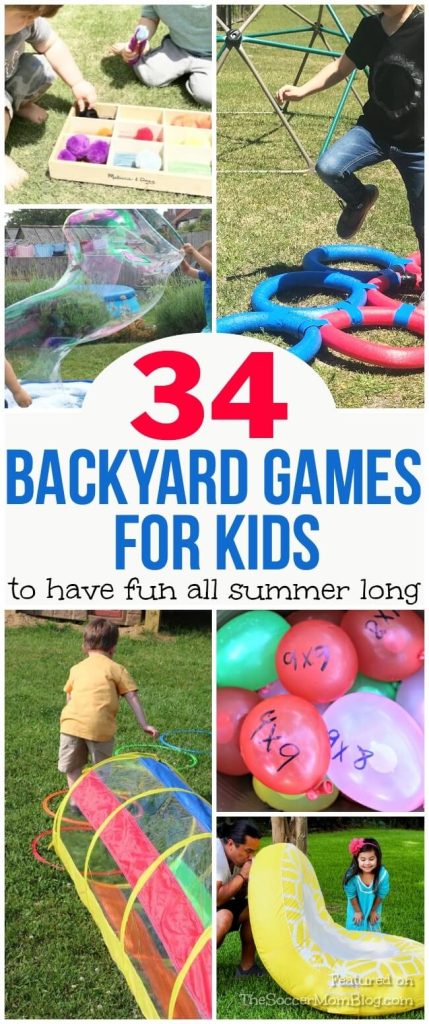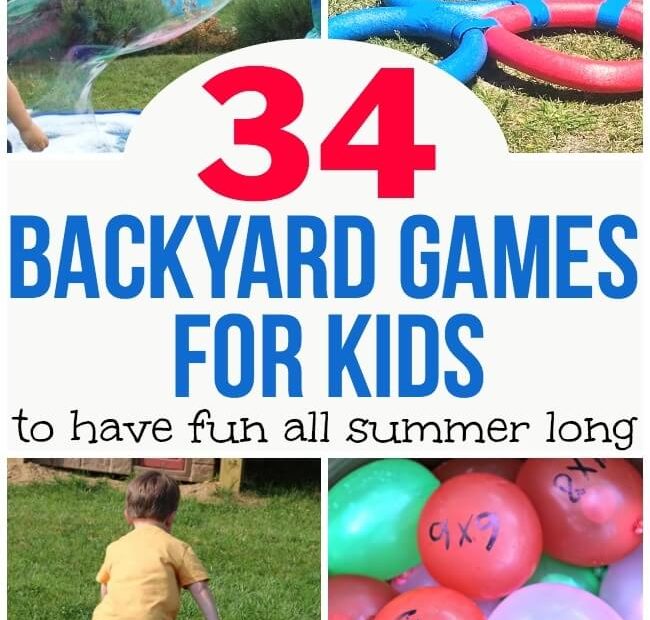Hi there! In this article, we’re going to talk about 10 fun DIY brain games that you can make at home to keep your kids entertained. These games are not only entertaining but also help improve cognitive skills and keep those little minds active. We’ll provide easy-to-follow instructions for creating these homemade brain games, perfect for a rainy day or when you just want to have some quality family time. So, get ready to discover some exciting and educational activities that your kids will love!
10 Fun DIY Brain Games to Keep Kids Entertained
Are you looking for fun and engaging activities to keep your kids entertained while also promoting their cognitive development? Look no further! In this article, we will guide you through ten exciting DIY brain games that you can create using materials from around the house. These games will not only entertain your children but also encourage critical thinking, problem-solving skills, and creativity. So, let’s dive in and explore the world of brain games!
1. Memory Matching Game
How to create a memory matching game using materials from around the house
A memory matching game is a great way to challenge your child’s memory and concentration skills. To create this game, you will need index cards or pieces of paper and markers. Begin by cutting the index cards into identical shapes and sizes. Then, using the markers, draw pairs of matching images or symbols on each card. Shuffle the cards and lay them face-down on a table or the floor. The objective of the game is to flip over two cards at a time and try to find a matching pair. If a player finds a match, they get to keep the cards and take another turn. If not, they must flip the cards back over, and it’s the next player’s turn. The player with the most matches at the end of the game wins!
Step-by-step instructions for making the game
- Cut index cards into identical shapes and sizes.
- Use markers to draw pairs of matching images or symbols on each card.
- Shuffle the cards and lay them face-down on a table or the floor.
- Players take turns flipping over two cards and trying to find a matching pair.
- If a match is found, the player keeps the cards and takes another turn.
- If no match is found, the player flips the cards back over, and it’s the next player’s turn.
- The player with the most matches at the end of the game wins!
Tips for customizing the game to different skill levels
To make the memory matching game more challenging for older children, you can increase the number of cards they have to match. For younger children, start with a smaller number of cards and gradually increase the difficulty as they improve their memory skills. You can also use more complex images or symbols for older children and simpler ones for younger ones.
2. Puzzle Cube Challenge
Creating a puzzle cube using cardboard and paper
Puzzle cubes are not only fun to play with but also great for improving a child’s spatial reasoning and problem-solving abilities. To create a puzzle cube, you will need cardboard, paper, scissors, and glue. Start by cutting six identical squares from the cardboard. Then, cut six smaller squares from the paper and glue them onto each side of the cardboard squares, creating a colorful pattern or image. Once the glue is dry, fold each square in half and glue the edges together to form a cube shape. Now, challenge your child to solve the puzzle by aligning the images or patterns on each side of the cube.
Ideas for different puzzle designs and difficulty levels
You can make the puzzle cube more challenging by using more intricate patterns or images on each side of the cube. For younger children, you can use simple shapes or colors. You can also create cubes with varying levels of difficulty by increasing the number of squares used to construct the cube. The more squares, the more complex the puzzle becomes.
Instructions for solving the puzzle cube
- Examine the cube and familiarize yourself with the images or patterns on each side.
- Rotate the cube, trying to find matching patterns or images on adjacent sides.
- Start by aligning two sides with matching patterns or images.
- Keep rotating and aligning different sides until all six sides have matching patterns or images.
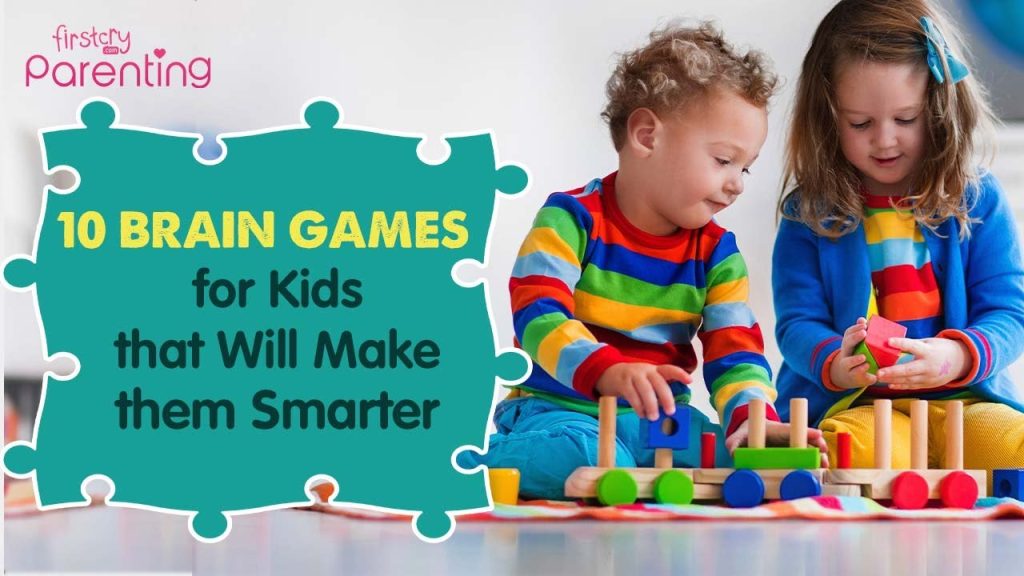
3. DIY Word Search
Creating a personalized word search using a grid and themed words
Word searches are a classic brain game that helps children with spelling, vocabulary, and pattern recognition. To create a personalized word search, start by drawing a grid on a piece of paper. Write down a list of themed words that you want to include in the puzzle. Then, hide these words in the grid by placing them horizontally, vertically, or diagonally and filling the empty spaces with random letters. Make sure to mark the words at the bottom of the page. Now, challenge your child to find all the hidden words within the grid!
Tips for selecting words and designing the puzzle
When selecting words for the word search, choose words that are appropriate for your child’s age and interests. You can also tailor the difficulty level by varying the length and complexity of the words. To make the puzzle more challenging, you can include diagonal or backward words. Just remember to mark the direction of the words at the bottom of the page to help your child.
Ideas for making the word search more challenging
To make the word search more challenging, you can increase the size of the grid or add more words to find. You can also create themed word searches related to a specific topic, such as animals, countries, or sports. Additionally, you can time your child and challenge them to find all the words within a certain time limit.
4. Homemade Tangram Set
Creating a tangram set using craft foam or cardboard
Tangrams are an ancient Chinese puzzle that can enhance a child’s spatial reasoning, problem-solving, and geometry skills. To create a tangram set, you will need craft foam or cardboard and a pair of scissors. Start by cutting a square from the craft foam or cardboard. Then, cut the square into seven puzzle pieces: five triangles, one square, and one parallelogram. Your child can now use these pieces to create various shapes and objects by arranging them!
Instructions for cutting the shapes and arranging them to solve puzzles
- Cut a square from the craft foam or cardboard.
- Cut the square into five triangles, one square, and one parallelogram.
- Challenge your child to arrange the pieces to form specific shapes or objects.
- Encourage them to experiment and explore different arrangements until they complete the puzzle.
Ideas for creating unique tangram puzzles
You can create unique tangram puzzles by printing or drawing shapes on a piece of paper and challenging your child to recreate them using the tangram pieces. You can also ask your child to create their own shapes and challenge others to solve their tangram puzzles. This promotes creativity and critical thinking.
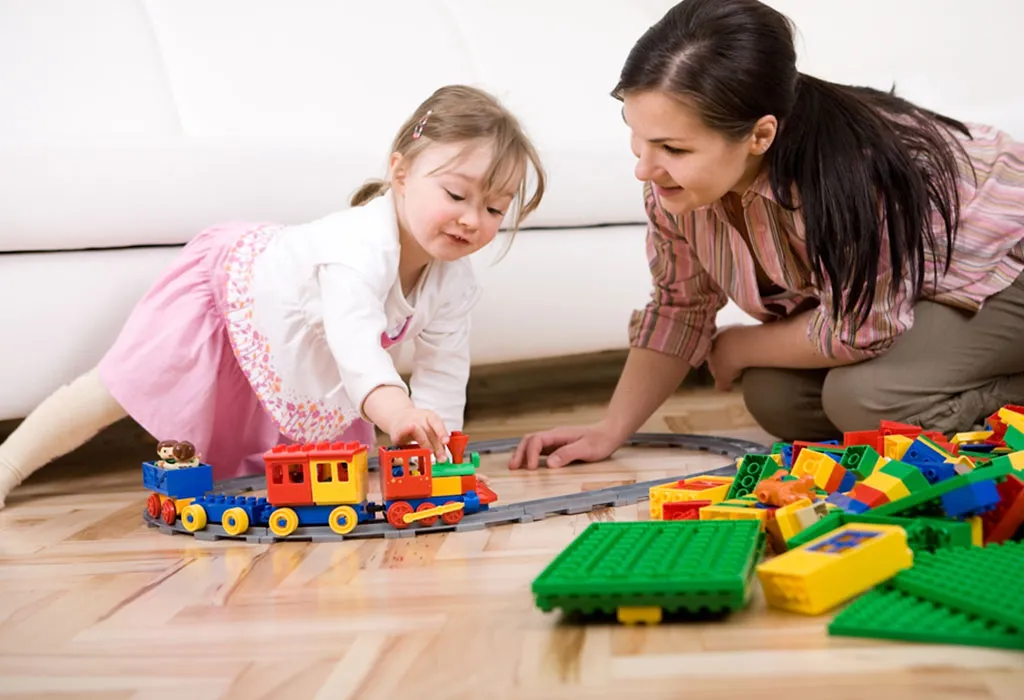
5. Math Card Games
Instructions for playing math card games like ‘War’ and ‘Go Fish’
Math card games are a fantastic way to reinforce mathematical concepts while having fun. Two popular math card games are ‘War’ and ‘Go Fish.’ To play ‘War,’ divide a deck of cards evenly between two players. Each player flips over a card, and the player with the highest number wins both cards. For ‘Go Fish,’ remove all the face cards from the deck and distribute the remaining cards between two or more players. The objective is to collect sets of matching cards by asking the other players if they have a specific card. If they do, the player collects the card; if not, they ‘go fish’ and draw from the deck. The player with the most sets at the end of the game wins!
Ideas for incorporating different math concepts and skills
You can incorporate different math concepts and skills into these card games by asking your child math-related questions before each turn. For example, you can ask them to add or subtract the numbers on the cards they flip over in the ‘War’ game. In the ‘Go Fish’ game, you can ask them questions about multiplication or division. This adds an educational aspect to the games while making math more enjoyable.
Tips for adapting the games for different age groups
For younger children who may not be familiar with numbers, you can modify the games by using cards with dots, shapes, or pictures that they can count or match. You can also simplify the rules or use a smaller deck of cards. For older children, you can introduce more complex math concepts like fractions or decimals and incorporate them into the game.
6. DIY Labyrinth Game
Building a maze using cardboard and marbles
Labyrinth games are excellent for developing hand-eye coordination, problem-solving, and patience. To create a DIY labyrinth game, you will need a piece of cardboard, a shallow box, and marbles. Start by cutting the cardboard to fit inside the box. Then, draw a maze on the cardboard using a pencil or marker. Once you are satisfied with the design, place the cardboard inside the box and scatter a few marbles on top. The objective of the game is to tilt the box and guide the marbles through the maze, avoiding any dead ends, until they reach the finish line.
Tips for designing different maze layouts and levels
You can design different maze layouts and levels by varying the complexity of the paths. Start with a simple maze with a few dead ends for younger children and gradually increase the difficulty by adding more twists, turns, and dead ends for older children. You can also experiment with different maze shapes, such as circular or spiral mazes, to add more excitement to the game.
Instructions for playing and solving the labyrinth game
- Place the marbles on top of the maze inside the box.
- Tilt the box gently to guide the marbles through the maze.
- Control their movement by avoiding the dead ends and navigating through the correct paths.
- Continue tilting and guiding the marbles until they reach the finish line.

7. DIY Sudoku
Creating a Sudoku grid and filling it with numbers or symbols
Sudoku is a popular puzzle game that helps children develop logical reasoning, critical thinking, and strategic planning skills. To create your own Sudoku puzzle, start by drawing a 9×9 grid on a piece of paper or use a printable Sudoku template. Fill in some numbers or symbols in the grid, making sure that each row, column, and 3×3 square contains all the numbers or symbols from 1 to 9, without repetition. Challenge your child to fill in the empty squares with the missing numbers or symbols, following the same rules.
Tips for solving Sudoku puzzles and strategies
To solve a Sudoku puzzle, start by looking for any numbers or symbols that can only fit in one particular square based on the existing ones. Then, move on to filling in the squares that have limited possibilities. Use the process of elimination by considering the numbers or symbols already filled in each row, column, and 3×3 square. Keep practicing to develop your child’s problem-solving skills and ability to spot patterns.
Ideas for increasing the difficulty and complexity of the puzzles
To increase the difficulty and complexity of the Sudoku puzzles, you can reduce the number of filled squares at the beginning, leaving more empty squares for your child to fill in. You can also experiment with different symbol sets or introduce irregularly shaped Sudoku grids, such as diagonal or overlapping grids, to challenge your child’s problem-solving abilities further.
8. Pattern Recognition Challenge
Creating pattern challenge cards using paper or craft materials
Pattern recognition is an essential skill for children, as it helps develop their logical reasoning and ability to predict outcomes. To create a pattern recognition challenge, you can use paper or craft materials to make pattern cards. Each card should have a set of sequence or pattern that follows a specific rule. For example, you can create a card with a sequence of shapes, colors, or numbers that your child needs to study and identify the missing piece or the next element in the pattern.
Instructions for identifying and completing the patterns
- Show your child a pattern card and explain the rule or sequence to them.
- Challenge them to identify the missing piece or the next element in the pattern.
- Encourage them to explain the reasoning behind their answer.
- Check their solution together and discuss any misconceptions or alternative possibilities.
Tips for designing patterns of varying difficulty
To design patterns of varying difficulty, you can start with simple patterns that follow straightforward rules, such as increasing or decreasing numbers. Then, gradually introduce more complex patterns by incorporating multiple elements, changing colors or shapes, or using different rules, such as skipping or repeating elements. Consider your child’s age and ability when designing the patterns and adjust the complexity accordingly.
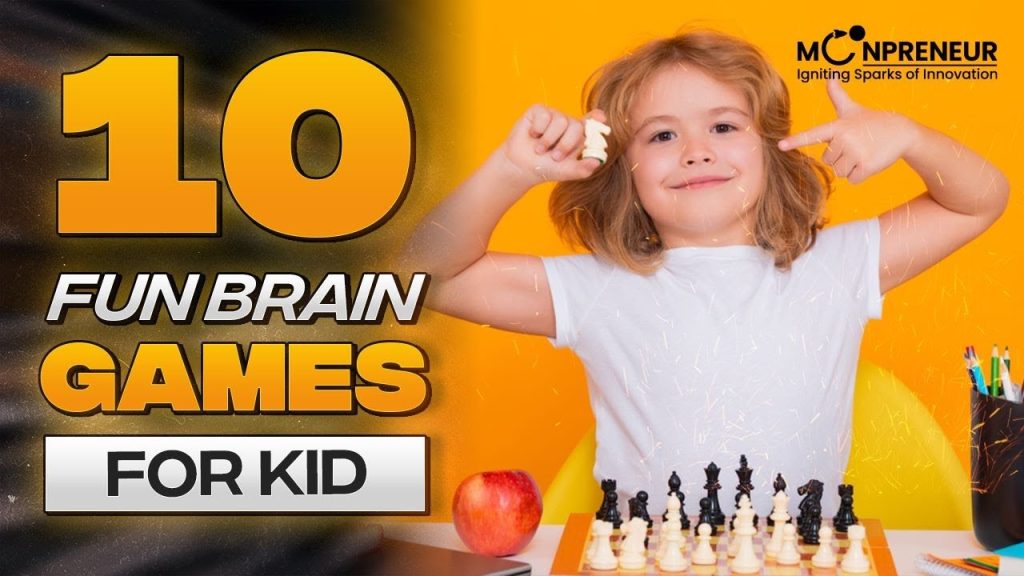
9. DIY Jigsaw Puzzles
Making jigsaw puzzles using family photos or magazine cutouts
Jigsaw puzzles are not only enjoyable to solve but also excellent for developing problem-solving, patience, and hand-eye coordination skills. To make your own jigsaw puzzles, you can use family photos or cutouts from magazines. Start by selecting a picture and gluing it onto a piece of cardboard. Once the glue is dry, cut the cardboard into various shapes and sizes, creating puzzle pieces. Mix up the pieces and challenge your child to solve the puzzle by reconstructing the image.
Tips for cutting and arranging the pieces of the puzzle
When cutting the puzzle pieces, make sure they are not too small or too large, considering your child’s age and dexterity. For younger children, you can create larger pieces with simpler shapes. For older children, you can make smaller pieces with more intricate shapes. Make sure to mix up the puzzle pieces thoroughly to add an extra challenge to the game.
Ideas for creating different levels of complexity
To create different levels of complexity in the jigsaw puzzles, you can vary the number of pieces or the intricacy of the image. For younger children, start with puzzles that have fewer pieces and larger shapes. As your child progresses, increase the difficulty by adding more pieces and using images with more details. You can also create puzzles with irregularly shaped pieces or double-sided puzzles with different images on each side.
Conclusion
In today’s digital age, it is important to provide children with fun and engaging activities that stimulate their minds and promote cognitive development. DIY brain games offer a perfect solution, allowing kids to have fun while enhancing their critical thinking, problem-solving, and creativity skills. The ten DIY brain games we have explored in this article are just the beginning. Feel free to get creative and come up with your own variations or tailor the games to your child’s interests and abilities. So grab those materials lying around the house and start keeping your kids entertained while also nurturing their brains!
